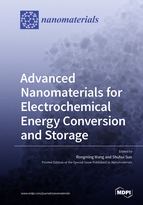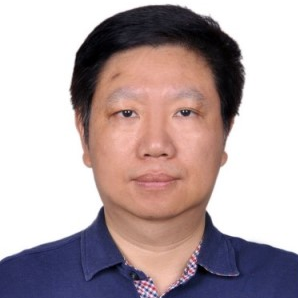Advanced Nanomaterials for Electrochemical Energy Conversion and Storage
A special issue of Nanomaterials (ISSN 2079-4991). This special issue belongs to the section "Energy and Catalysis".
Deadline for manuscript submissions: closed (20 July 2022) | Viewed by 34658
Special Issue Editors
Interests: magnetic nanomaterial; transmission electron microscopy; interface science; and materials genome engineering
Interests: carbon nanomaterials (carbon dots, graphene, carbon nanotubes, nanoporous carbons); metal and metal oxide materials for renewable energy conversion and storage, as well as environmental applications
Special Issue Information
Dear Colleagues,
In the last few decades, nanomaterials have been developing fast and explosively, and have gaining increased attention worldwide. Nanomaterials and the derived technologies are also showing capabilities for solving the challenges that humankind is facing, including the energy crisis and environmental pollution. They have found a large variety of applications in fuel cells, lithium batteries, supercapacitors, metal–air batteries, metal–ion batteries and CO2 reduction, as well as H2 generation and storage, which are all related to electrochemistry. Electrochemical energy applications often demand an understanding of the physicochemical, structural, and surface properties of nanomaterials, which can provide valuable insights into electrochemical reactions and mechanisms, leading to the achievement of the required performance, efficiency and cycle life for electrochemical energy devices. The purpose of this Special Issue is to provide a research forum to report the latest developments in nanomaterials for various applications in electrochemistry, and explore the potentials of nanomaterials for use in future electrochemical energy devices.
The topics of interest include, but are not limited to, the following:
- Nanomaterials for electrocatalysis;
- Nanomaterials for fuel cells;
- Nanomaterials for lithium batteries and beyond;
- Nanomaterials for metal–air batteries;
- Nanomaterials for supercapacitors;
- Nanomaterials for CO2 reduction;
- Nanomaterials for H2 generation and storage;
- Fabrication of novel nanostructures/nanocomposites by electrochemical methods;
- Structure and electrochemical characterization techniques.
Prof. Dr. Rongming Wang
Prof. Dr. Shuhui Sun
Guest Editors
Manuscript Submission Information
Manuscripts should be submitted online at www.mdpi.com by registering and logging in to this website. Once you are registered, click here to go to the submission form. Manuscripts can be submitted until the deadline. All submissions that pass pre-check are peer-reviewed. Accepted papers will be published continuously in the journal (as soon as accepted) and will be listed together on the special issue website. Research articles, review articles as well as short communications are invited. For planned papers, a title and short abstract (about 100 words) can be sent to the Editorial Office for announcement on this website.
Submitted manuscripts should not have been published previously, nor be under consideration for publication elsewhere (except conference proceedings papers). All manuscripts are thoroughly refereed through a single-blind peer-review process. A guide for authors and other relevant information for submission of manuscripts is available on the Instructions for Authors page. Nanomaterials is an international peer-reviewed open access semimonthly journal published by MDPI.
Please visit the Instructions for Authors page before submitting a manuscript. The Article Processing Charge (APC) for publication in this open access journal is 2900 CHF (Swiss Francs). Submitted papers should be well formatted and use good English. Authors may use MDPI's English editing service prior to publication or during author revisions.
Keywords
- nanomaterials and nanostructures
- interface science
- materials design
- characterization techniques
- electrochemical energy conversion and storage
- sustainable energy








